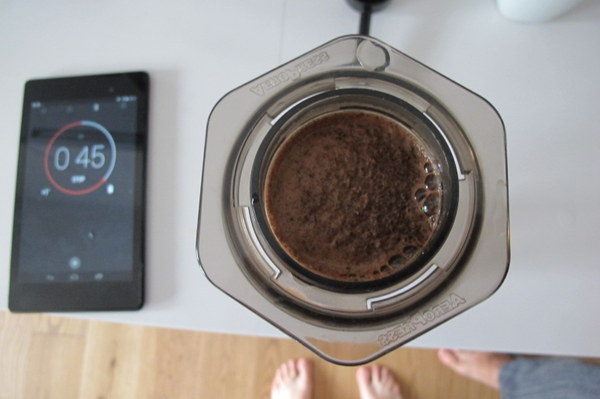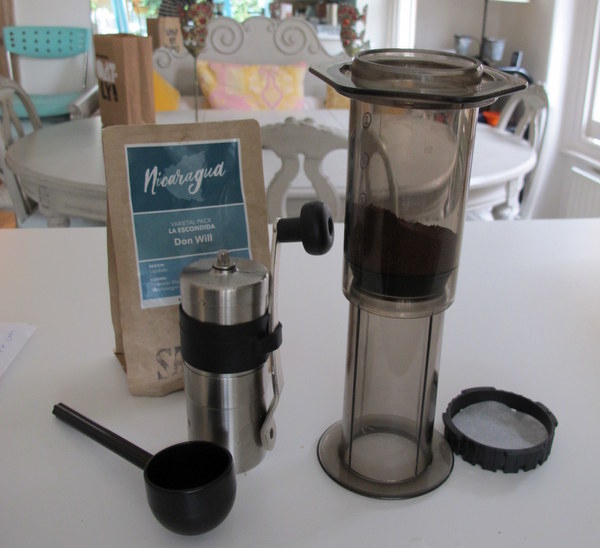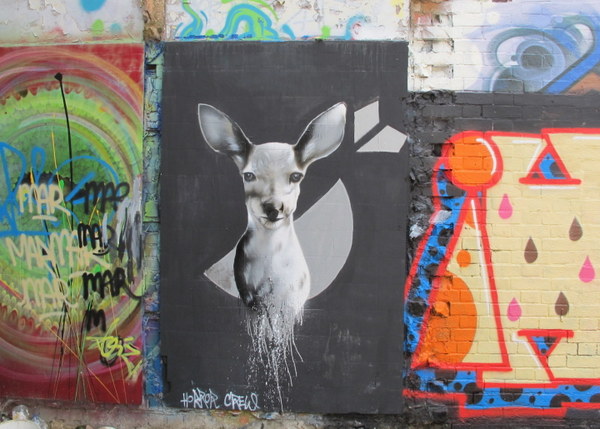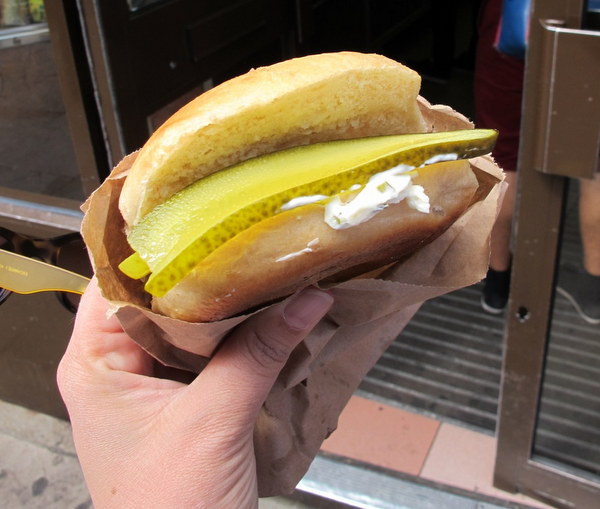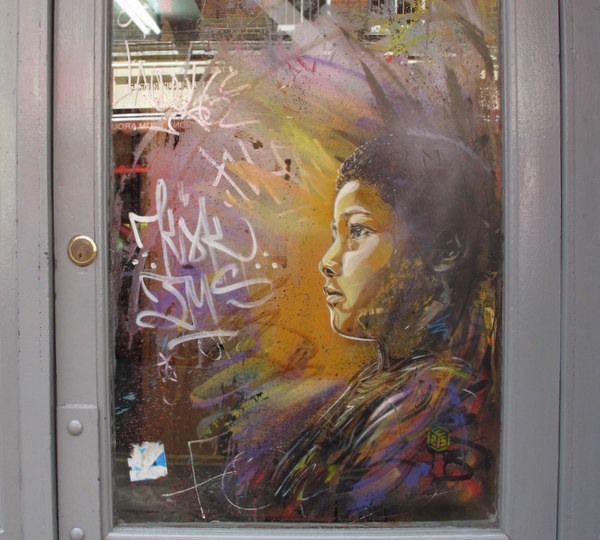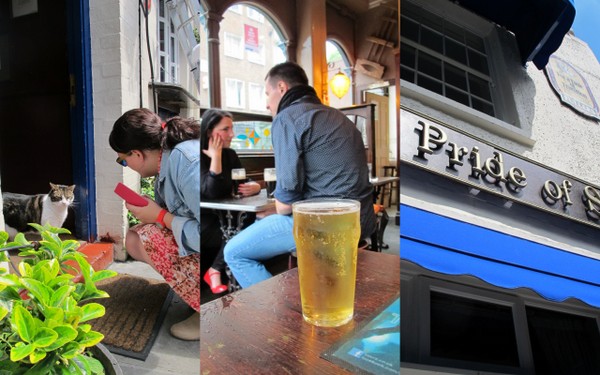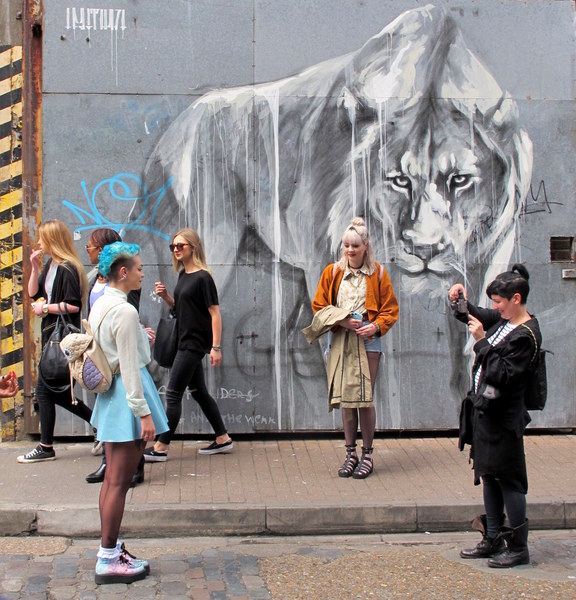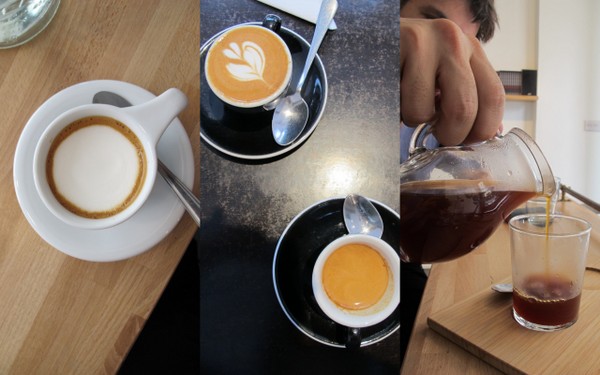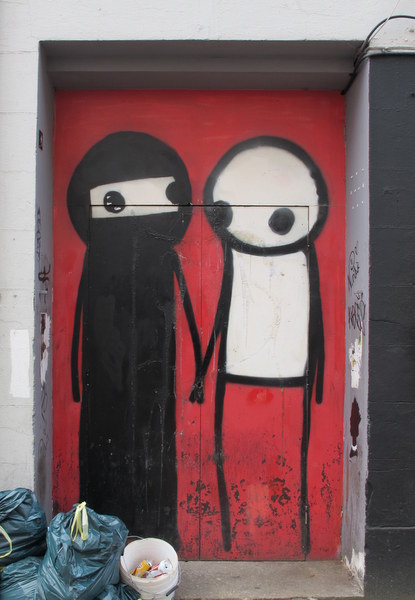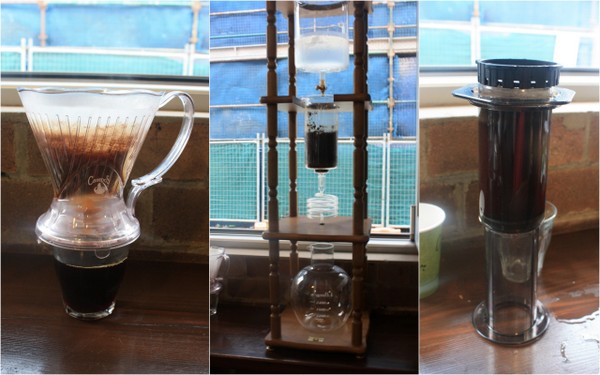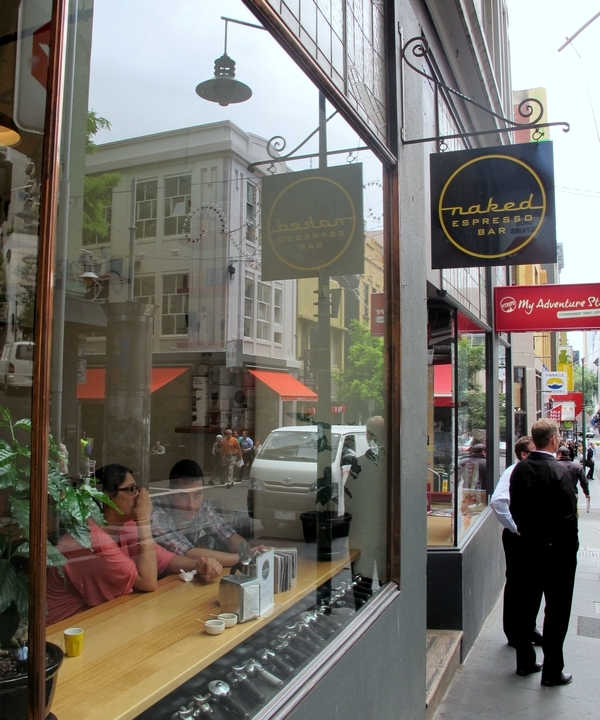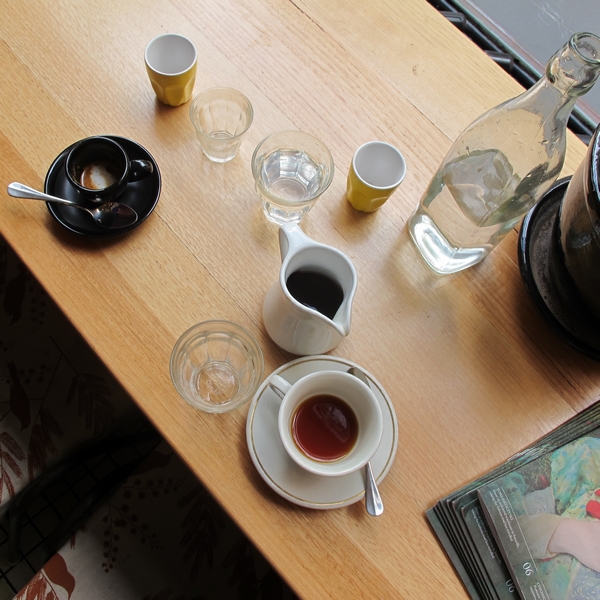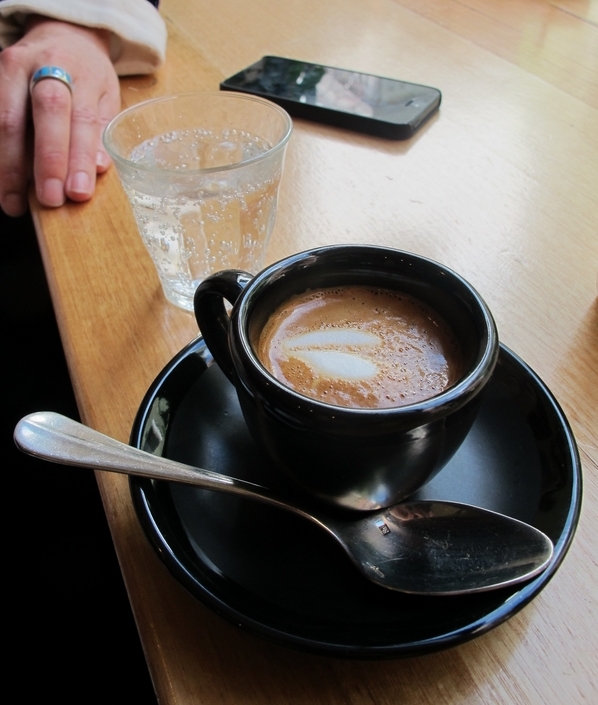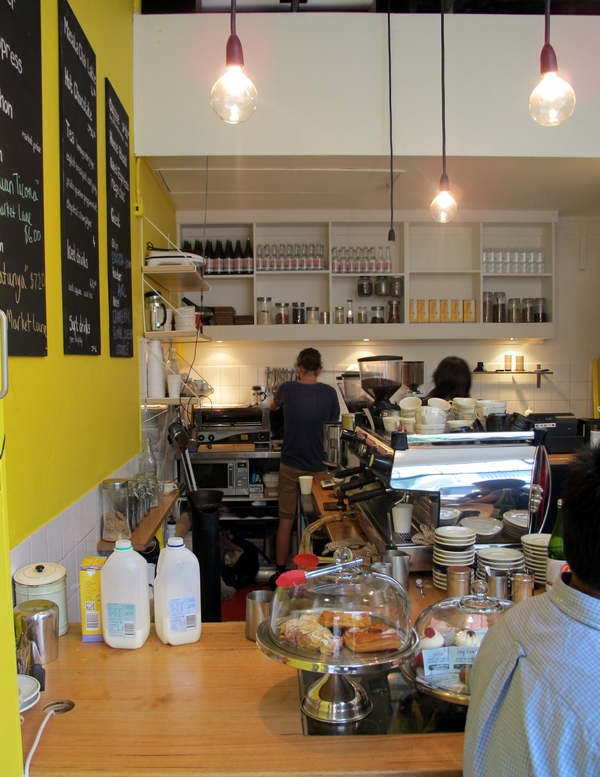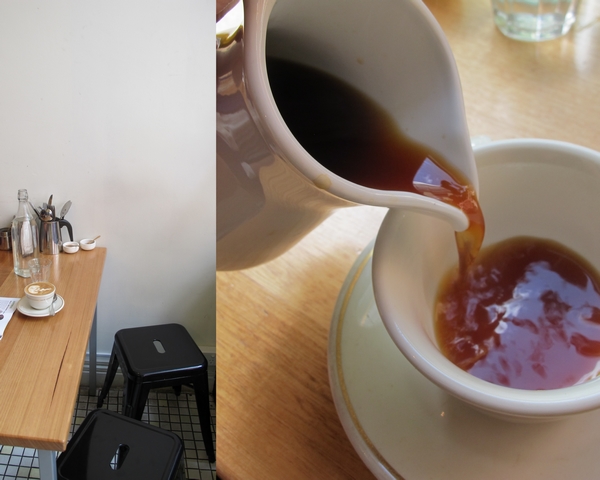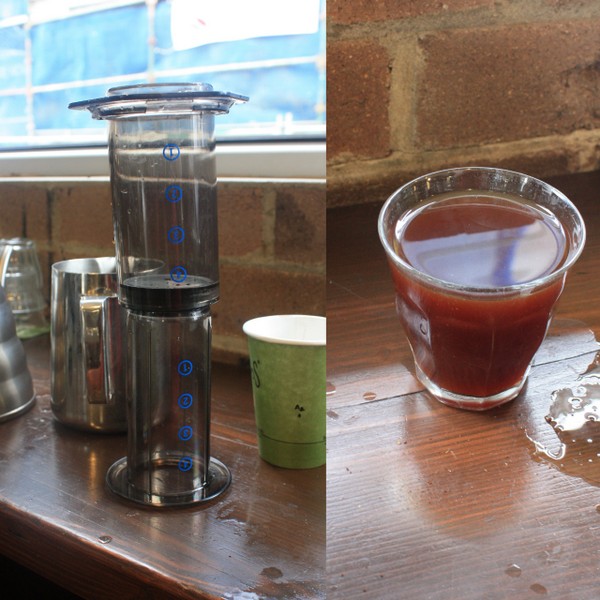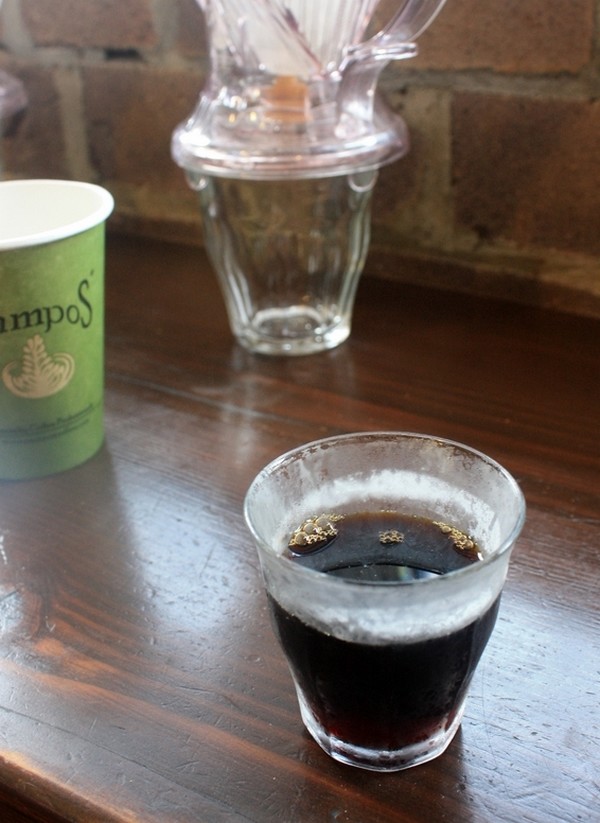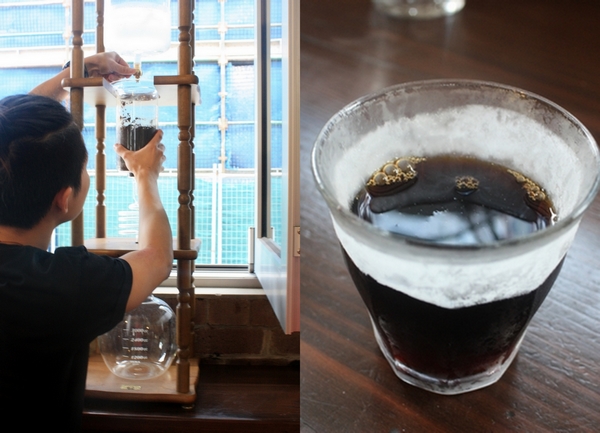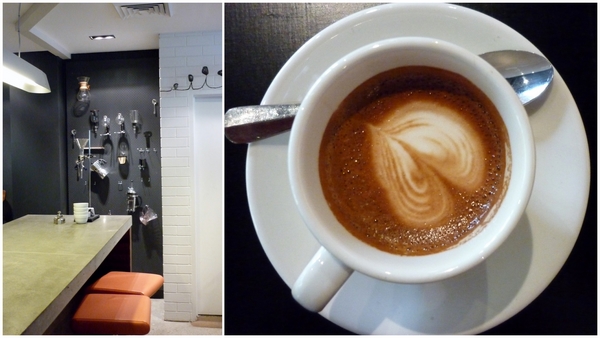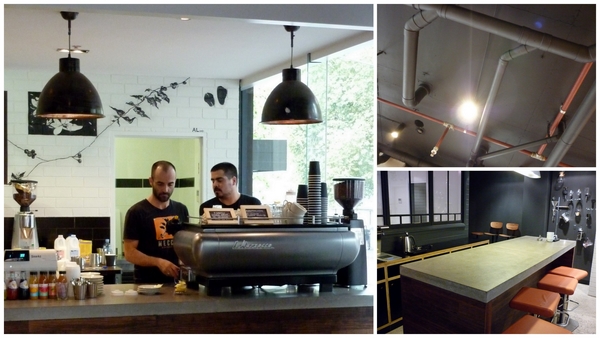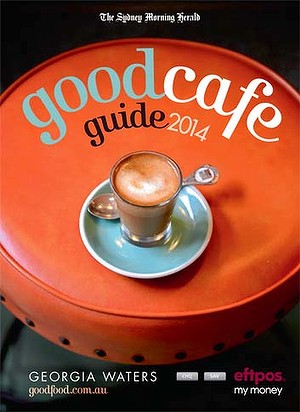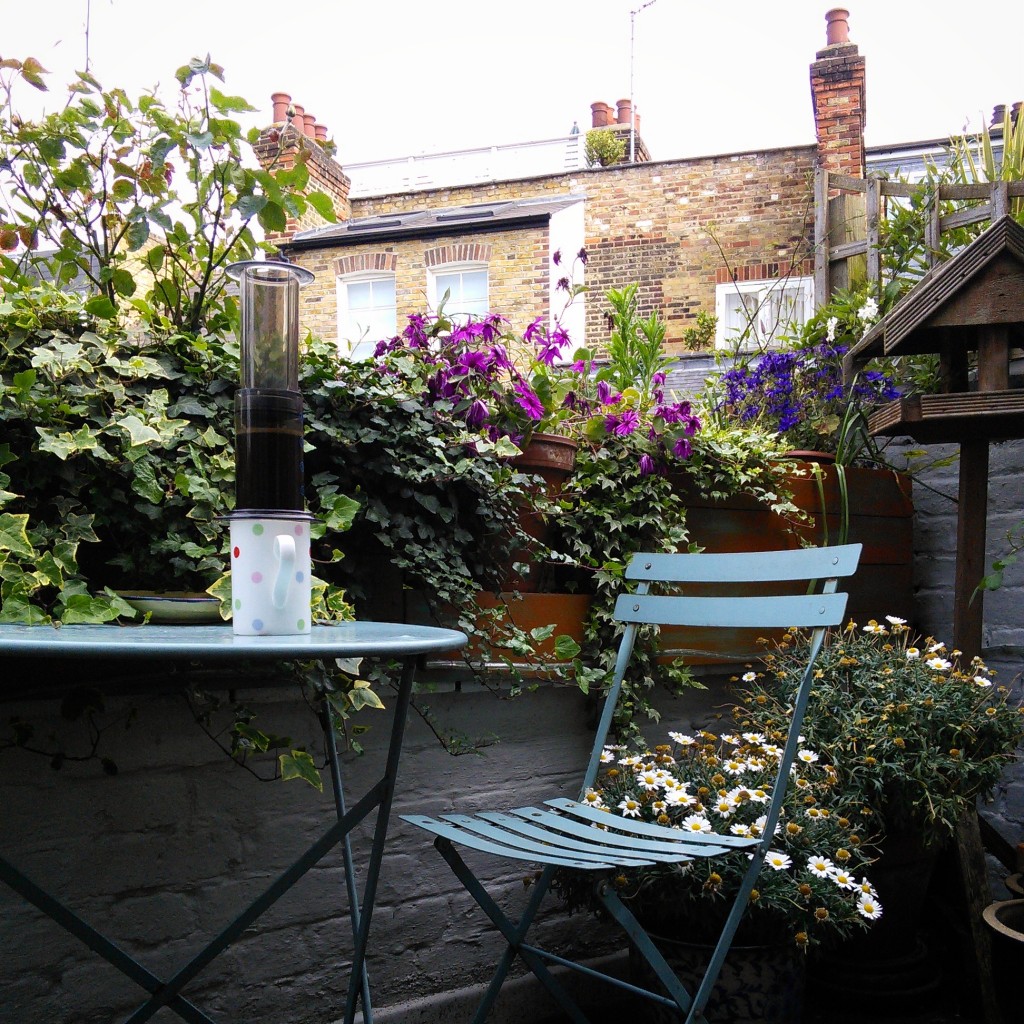
Make the aeropress your backup.
We coffee addicts, and even those of us who are coffee dabblers, usually have a go-to joint for our caffeine fix. But what of those particularly hectic workdays when you barely even have time to leave your desk? Or those rare and marvellous occasions when you find yourself travelling through unfamiliar lands, and you find that a good cup o’ joe is all too rare, and none too marvellous? In these situations, I put it to you that the consistent, tea-like gradual release caffeine buzz that is Aeropress is your best bet.
‘Third wave’ or filter coffee can often seem an overwhelming prospect, not only for its high-school-chemistry-looking gadgetry and need for precision, but also its almost dogmatic rejection of all things lactose-based (or adjacent). But it doesn’t have to be that way. In fact, in environments where a good coffee can be hard to find, it could be your salvation.
To become a competent (read: better than instant coffee or bad espresso) aerobrewster, you don’t need much, just:
A few abstract items:
• The ability to learn a new skill
• A willingness to drink black coffee
A few concrete items:
• Roasted coffee beans (as good quality as you can get your hands on)
• An aeropress
• The coffee scoop and filters that came with it
• A hand grinder (this one grinds well, is easy to use and tiny – it fits inside the aeropress itself)
• Your phone, if you can be bothered to time your brew
• A kettle, water
• A coffee mug
Nice-to-haves:
• Digital scales. Accomplished brewers consider these a must-have, if you already have some, use them, otherwise I think you’ll be ok.
What you do
1. First off, get everything together. Fill the kettle and set it to boil. You want boiled water that has cooled slightly (about 80 degrees).
2. Scoop in a scoopful of coffee and grind away until all the beans are ground. Set the aeropress up as above; the inversion method is the easiest. Pour in the ground coffee.
3. Dampen one circle of aeropress paper with a few drops of water and place it in the lid.
4. Set a timer for up to two minutes. Start the timer. Slowly pour in the boiled water over the course of about 20 seconds, trying to evenly coat all the coffee grounds you can. Agitate the aeropress slightly (either with a teaspoon or just twirl/shake it a touch) to make sure there are no pockets of dry grounds.
5. When there are only about 20 seconds left on the timer, screw the lid on the top aeropress and place a mug upside down on top.
6. Flip the entire thing, mug and aeropress over so the aeropress is on the top and the mug is on the bottom. Slowly press all the water through the aeropress until the time is up.
7. If you wait a few minutes, when you take the lid off the aeropress to clean it, you can push the wet coffee grounds out in one neat puck.
8. Savour your coffee as it cools and the flavours change.
Have you tried aeropress? Have you had good results?
We step up to the passport counter in Heathrow and the Border Force man takes a look at our pair of mismatched passports; one Aussie and one EU.
‘So how do you two know each other then?’
An innocent enough-sounding question, it has the air of small talk at a dull party, but it is asked in quite an aggressive way, and I’m confused after 7 hours of flying. It seems out of context and I feel my answer will determine (or rather, this man will) whether or not we’re allowed in to Britain. Struggling for a middle ground between recounting our entire romantic history and telling him to get fucked, I blurt out
‘We’re, you know…in a relationship?’
He seems ok with this and after determining we’re here for a holiday and a conference he lets us through.
After shiny silver Dubai airport with nary an accusing sign or announcement in sight (one gets the sense no one would dare ruffle the pristine environs with activities so base as eating, smoking or talking loudly on their mobiles), we’re greeted by a gaggle of signs instructing us wheretogowhattodowhatnottodowheretostandandsoforth. At the baggage carousel, an announcement comes over the PA asking parents to watch their children and don’t let them climb on it as ‘it is not a playground.’ The passengers laugh; it cuts through the tension to know we all find this place equally ridiculous and we’ll be out soon.
Fast forward to our eventual arrival in the vibrant hipster inner-city hub of Shoreditch. We’re staying steps away from Brick Lane’s curry houses in the slightly cheaper suburb of Spitalfields, pretty much the street art capital of the world, and I’m told the coffee ain’t bad either. Our pretty uninspiring but actually pretty nice apartment we’re sharing with Tara turns out to be round the corner from the iconic ‘Pride of Spitalfields’ Pub, complete with pub cat Lenny and friendly bar staff, it has been there since the 19th century.
Brick lane Markets are winding down (it’s a Sunday) but it’s still pretty manic so we hit up the Beigel Shop and see the sights. The streets and surrounding bars are packed and there’s a holiday vibe in the air; it’s exactly the kind of scene you want to arrive to one the first day in a new place. This week is also the Graduate Fashion show, which means that the Shoreditch crowds are looking extra avant-guard. I look at some of these girls and I suddenly understand why people give a fuck about fashion. These people really wear their clothes, the clothes don’t wear them. Like some of the brilliantly executed and ever-evolving art on the walls around them, what they’re wearing is site-specific. It lives in this space, and it was designed to be here. There’s a lot of diversity in what people are wearing, but the majority of them are wearing chunky, dutch-looking sandals, many with socks, and I’m right back in to my ‘fashion is a waste of time’ mindset.
The first days in a new place can often seem hyperreal, and that’s how this day, this moment is for us. It’s kind of a ‘see the cool thing and go home and crash’ vibe, so we do. The next day we head out on a morning street art tour; three hours of walking and learning about the ever-changing Brick Lane and Shoreditch streets and walls. We meet our guide, Dav at the goat statue outside the Old Spitalfields market. It’s a good-sized tour of seven people. From there we weave through the streets and alleyways of Shoreditch and Spitalfields tracing the history and meaning behind of street art through surfaces covered with tags, stencils, paste-ups, freehand painting, etching, stickers and sculptures. I can honestly say that I was not bored for one single minute of this three hour tour so if you’re ever in Shoreditch, give it a go. I enthusiastically recommend it.
Of course we have to squeeze in at least a couple of ace coffees on our first day. The first is at Nude Espresso, which becomes our coffee home-away-from-home for the next few days. Super syrupy espresso and a selection of beans on offer (why didn’t I buy some?!) friendly staff with zero attitude, it was by far my fave haunt (post to come). We also hit up relative newcomer Craft Coffee for an immaculately prepared aeorpress and an espresso. After burgers and ice cream and drinks, the three of us waddle home, content.
Five café trends that keep the industry growing
Whether you’re looking to wile away the hours lingering over an aeropress on a sunny stoop or stop to quickly slurp down a ristretto, there’s no denying that we Sydneysiders are pretty bloody spoiled when it comes to café choice. This year, I had a the chance to pen a few reviews for The Sydney Morning Herald Good Café Guide 2013, which I more than jumped at. Here are 5 trends that’ll keep the Sydney café scene growing for the next 12 months.
- Migration south-westwards - despite what some of us may believe, coffee doesn’t begin and end with Surry Hills. Unsurprisingly, Marrickville did fantastically well at this years’ Good Café Guide Awards; although Surry Hills Cafés took out 3 of the 10 awards on offer, Marrickville’s Coffee Alchemy won ‘Best Coffee’, and 3 of the 13 coffees awarded 3 cups (a score of 18-20 out of 20) are located in Marrickville, a result unrivalled by any other Sydney suburb. ‘Best Café’ went to Circa in Parramatta, ‘Best New Café’ to inner-westie Excelsior Jones and a bunch of new cafés were added to the guide in other south west suburbs.
- Green bean obsession - whether is be microlots, single origin, home roasting or becoming bffs with the dude that harvests your beans, our coffee houses are fast filling up with coffee bean obsessives. What’s more, cafés without a knowledge of the raw materials look like they lack knowledge full stop, and knowing what’s what bean-wise is only going to become more important as time goes by.
- ‘Your local’ - this phrase still applies to our local watering hole, it’s just the beverages we’re consuming these days are of the stimulating variety. The barista is fast replacing the barkeep as the one we tell our troubles to, and multiple trips to grab that picollo each day mean we may spend more time at the espresso machine than having post-work beers with our work-mates.
- Alterna-brews just keep growing – From aeropress to syphon, cold drip to pourover, non-espresso black coffee methods with freshly ground beans gives new meaning to the phrase ‘hand-crafted coffee’. To cultivate any kind of rep for coffee geekery, step away from the espresso machine and get back to basics.
- Pop-ups, co-labs and add-ons – Last night at the SMH Good Café Guide Awards, Editor Jill Dupleix mentioned the rise and rise of what she called ‘the café plus’; the café-and-bakery, the café-and-bar, the café-and-barber, the café-and-kitchen-garden. I’d like to add to this the growing trend of pop-ups within cafés, collaborations between different food and non-food businesses, and things like beer tastings or late-night dinners after hours, not to mention coffee carts, vans and food trucks. Café patrons are more than happy to think, eat and drink outside the box, quite literally.
What makes a good café is relatively subjective, but it’s always fun I think to grab the guide and pore over it (perhaps over a café brekky?) and argue over why your fave coffee joint was hard done by, whereas that snooty place down the road doesn’t know its arse from its elbow. With 347 cafés reviewed, almost one for each day of the year, it’s really just the beginning as far as getting yourself caffeinated and brunched-up is concerned.
The Guide is available today in bookshops and online for $9.99. It will also be sold for $5 this Saturday with The Sydney Morning Herald.
What do you think are the big café trends right now?
Manual brewing, alternative brewing, whatever you want to call it, it’s time to give it a go. DIY brewing methods such as aeropress, cold brew, pourover, syphon and their more well-known cousins such as French press and stove top coffee form another frontier in the exploration of coffee flavour. What’s more, they’re portable, cheap and easy to learn.
embedded by Embedded Video
YouTube
Still not convinced? Then check out my Q&A with Campos’ resident black coffee fanatic David Ruslie above. He talks black coffee culture in Australia, who’s ahead in the Sydney vs. Melbourne black coffee game and why you should give a damn about hands-on coffee brewing.
Other Black Coffee Revolution Posts:
Aeropress
Cold Drip Coffee
So apparently there’s a rumour going around that I’m multiple people, I *think* this might be because if you follow me on instagram I’m all over the place lately. Fear not, chums, I am the one and only Lauren Quinn of Corridor Kitchen, I’m just *ahem* between projects right now, and that gives me ample time to drink coffee all over. In the last two months I’ve had the pleasure of visiting Newcastle and surrounds, Canberra, Bendigo/Castlemaine/Daylesford, the Great Ocean Road, and even good old Melbourne town. And I bet you wanna know my go-to for espresso magic (and no, I don’t mean that bullshit flat white concoction) in Melbourne. ‘Cause good coffee in melbs is so hard to find.
The last couple of times I was in the Melbourne CBD, I made a beeline for Naked Espresso, a cute and well known place on Little Bourke Street. These guys use naked portafilters for their espresso (hence their name) but they also tick the specialty coffee box with their selection of ‘new brew’ techniques such as aeropress and pourover.
This place is a coffee nerd’s paradise; their blackboards list the day’s brews complete with tasting notes, and they sell enough different beans, gadgets and paraphernalia to keep the caffeine-obsessed happy for yonks. The coffee menu changes often, with appearances from the likes of Market Lane, Axil Coffee Roasters and even Naked’s own house blend. On my most recent visit, there were couple of Market lane single O’s on offer for syphon/pourover/aeropress, the house blend for espresso-based coffees and an Axil single origin as their guest coffee.
I sample the market lane Juan Ticona brewed as an Aeropress, it has a lovely chocolatey flavour, mild and delicious. My companion and I also go macch-wild on the house blend – vibrant, vivid, deep and bittersweet, it is an absolute pleasure to savour. Even the aftertaste is sublime.
The menu is a simple affair. There are a a few brekky things- toast and its cousins, baked eggs, porridge and an array of jaffles. They charge 50 cents for swapping/changing ingredients, which I think is fair enough. But this place is really about the coffee. Our house of worship, we are devotees at the caffeine alter. Freshly ground beans are our processional incense. I could sit here forever.
Naked Espresso
390 Little Bourke Street, Melbourne VIC 3000
03 9670 3569
In these posts, we look at black coffee – the contraptions, the methods, the how to’s and the why’s. David Ruslie, Campos’ resident black coffee obsessive, walks us through aeropress, cold drip and pourover. He says there’s a growing interest in black coffee, because, sans milk and sugar, it really allows you to explore the flavour profiles of the coffees themselves.
“Coffee appreciation…it’s catching up to wine appreciation. There’s a lot more tasting notes, say with wine you have 200 tasting notes. Well, with coffee, you have 800 tasting notes, it’s really incredible.” David says. Sure, the man or woman on the street doesn’t need to know all 800 to enjoy their ‘new brew’, but it’s handy, he says, to be able to identify which flavours you prefer. You may think you’re not a black coffee drinker, but maybe you just haven’t found the right bean or the right method.
This week David shows us the simplest and most portable of the black coffee methods, aeropress. There are two main ways David uses the aeropress: the ‘normal’ method and the inverted method. In both cases, he advises that you pre-wet the paper filter with a few drops of water beforehand. To be precise, it’s also worth having a digital scale on hand to weigh your coffee and water, but you can also do it by sight. And the reason the water is boiled at the very beginning is that we’re aiming for water temperature of 92-96 degrees. The video gives you a good idea of what the below instructions actually look like in practice. If you’re interested in buying an aeropress, follow this link.
What you need:
– An aeropress
– an aeropress paper filter
– a kettle
– a mug to drink out of
– ground coffee or coffee beans
– a hand grinder (optional)
– a digital scale (optional)
embedded by Embedded Video
YouTube
The Normal Method
1. Boil your kettle.
2. Dampen the paper filter, place it in the aeropress disc and fit the disc into the larger of the two tubes.
3. Place the aeropress, filter end down on your scales and ‘zero’ them. Grind and/or pour in coffee to the desired weight.
4. Place aeropress over a mug or jug, filter side down.
5. Zero your scales again. Pour in 200g of boiled water. Give it a stir. Steep for 45 seconds.
6. Stir once again and place the ‘plunger’ in the aeropress. Slowly push down until all coffee is in the cup (about 20 seconds).
The Inversion/Upside Down Method
1. Boil your kettle.
2. Push the ‘plunger’ into the aeropress tube and turn upside down so that the tube is on top and the plunger is on the bottom.
3. Place it on your digital scales and ‘zero’ them. Grind and/or pour in coffee to the desired weight into the tube.
4. Zero your scales again. Pour in 200g of boiled water. Do not stir. Dampen the paper filter, place it in the aeropress disc and place on top of the upside down aeropress. Steep for 1 minute and 30 seconds.
5. Stir the coffee to break the crust. Fit the disc into the top of the aeropress. Place a jug or mug upside down on it.
6. Flip the entire aeropress 100 degrees. Slowly push down until all coffee is in the cup or jug (about 20 seconds).
Other Black Coffee Revolution Posts:
Cold Drip Coffee
Over the next month, I look at black coffee – the contraptions, the methods, the how to’s and the why’s. David Ruslie, Campos’ resident black coffee obsessive, walks us through aeropress, cold drip and pourover and explains why he’s so passionate about this back-to-basics approach.
“Australian coffee culture is actually milk coffee culture, and I’m trying to change it,” David tells me. Single-handedly trying to convert us from flat-whites-with-one to siphon/cold drip/aeropress? Not so much, Dave says, but he’s excited to share the precision and hands-on nature of black coffee brewing with me. He kindly offered to walk me through these ‘third wave’ or ‘fourth wave’ (whatever it is we’re up to now) methods. We’re going to start with the chemistry lab setup that is cold drip.
David explains that there are two basic methods of coffee making- immersion and percolation, and cold drip is full percolation. This method involves steeping fresh, coarse coffee grounds at room temperature over time, usually around 12 hours. This results in an extremely caffeinated, low acidity, sweet-tasting cold coffee, and a brew that non-espresso drinkers often warm to. ‘It doesn’t actually taste like coffee.’ says David, which is a good way of explaining the flavour- bright, mild and tea-like.
For the cold drip, David used 1500mls of water for 250g of ground coffee, with a resulting yield of 1200ml of cold drip brew. The ideal brewing time is 12-15 hours, as there is no heat to aid extraction. David favours 8-9 drips per 10 seconds
As complex as this chemistry lab setup may look, you don’t necessarily need it to cold brew your own coffee at home. Similar results can be achieved by steeping coffee in a jar or overnight, and then pouring the resulting liquid through a coffee filter and chilling for future use. You can also do this in a French press, as you would for hot coffee but again, overnight.
embedded by Embedded Video
YouTube
The video above demonstrates how cold drip is made. For more info on how to brew you own cold coffee at home, click here.
Are you a cold coffee fan? What’s your fave way to enjoy it?
Other Black Coffee Revolution Posts:
Aeropress
When I say coffee, I mean espresso. So it’s easy to forget that there’s more than one way to brew a bean. Luckily, the Black Coffee Pop-up is in Sydney this week showing off the ins and outs of non-espresso coffee methods, brewing pour-over, siphon and the aero-press coffees from 19-22 April at Outré Gallery in Surry Hills.
Black Coffee is exactly what it sounds like. The brainchild of Seven Seeds barista Mark W Free (the one in the hat), Black Coffee has appeared at Somewhere Store Gallery in Melbourne and serves nothing but black coffee – no milk, no sugar, no espresso, and, according to their website, ‘no bullshit’.
There are a range of Sydney and Melbourne beans to sample – Mecca, Single Origin, Reuben Hills and Coffee Alchemy, Market Lane, Seven Seeds and Small Batch by Auction Rooms.
The focus on the coffee part of coffee makes sense to me. And I have to admit it’s nice to savour more than a thimblefull and really drink in that aroma. We tried the Market Lane Boa Vista from Brazil (pourover), its heady aroma of roasting chestnuts drawing us in. The taste is far mellower than the smell, far from the concentrated hit I’m used to, but it grows on you.
Recently there’s been a growing trend towards coffee geekery and gadgetry (in fact, towards geekery and gadgetry in general), but also a renewed interest in no-fuss food and drink. The time is right for something like the ‘pay what you you feel’ Black Coffee pop up, proving that anyone can make coffee, you don’t need a fuck off espresso machine, a commercial grinder or a crash course in barista basics.
It’s a good time to be a caffeine addict, however you take your coffee.
Black Coffee Pop up Sydney
19-22 April 2012
Outré Gallery
7/285A Crown Street
Surry Hills NSW 2010
(02) 9332 2776
http://blackcoffeeshop.tumblr.com/
http://blackcoffeeshop.com.au/
There’s an interesting phenomenon when it comes to coffee in the Sydney CBD. It’s fast. It’s cheap. It’s abundant. It’s usually pretty good. But there’s not often time to blow your mind at 9:45 on a Tuesday morning. And come the weekend, going out for coffee becomes a daunting prospect as the men and women in suites retire to the inner and outer suburbs for a spot of R & R and CBD coffee more or less shuts down.
Another phenomenon is the ‘black holes’ all over the CBD. Sure, you’re spoilt for choice on the Surry Hills/CBD border, but what about Chinatown/Ultimo? I struggled to think of anywhere off the top of my head, but then, Ultimo never really occurs to me as a place to go for coffee. Until now.
There are a few well known ‘solid’ cafés in the CBD and Mecca is often cited as one of them. They now have three stores, one at 67 King Street, one at 1 Alfred Street and the newest addition in Ultimo at 646 Harris Street, just down from ABC studios in what used to be Gloria Jeans. Having previously checked out their King Street café I decided to give the Harris Street Mecca a go as it is sort of walking distance from my place and only opened last month.
The interior of Mecca is quite spacious so there’s plenty of places to sit, with polished concrete floors and sheet glass windows. The decor is sparse but welcoming, old-style wooden school chairs and polished black tables arranged in an orderly fashion. Not unlike Don Campos, the decor screams professional, but in this case with a touch of quirkiness. We ordered and payed for our two macchiatos at the counter before sitting down. Our coffees came promptly and were a tad milkier than many macchiatos, but I never consider that a problem myself. The flavour was creamy and rich and it was nice to sit for a while and not worry that we were taking up a table. I’m used to the cramped cafés of Newtown and surrounds which are generally pretty tiny, not the kind of places where you could spend the whole morning.
We ordered and payed for our two macchiatos at the counter before sitting down. Our coffees came promptly and were a tad milkier than many macchiatos, but I never consider that a problem myself. The flavour was creamy and rich and it was nice to sit for a while and not worry that we were taking up a table. I’m used to the cramped cafés of Newtown and surrounds which are generally pretty tiny, not the kind of places where you could spend the whole morning.
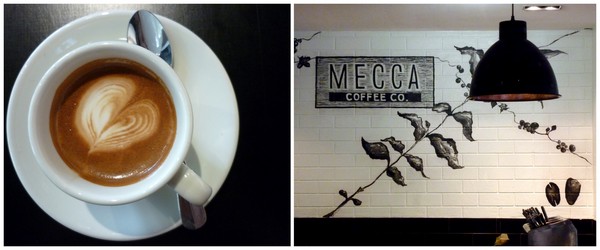 Mecca also have a breakfast and lunch menu with various toast-with-stuff options for breakfast and sandwiches, salads and Panini for lunch, which all seemed very reasonably priced. There is also a liquor licence in the works. All in all a solid experience and I would definitely visit again.
Mecca also have a breakfast and lunch menu with various toast-with-stuff options for breakfast and sandwiches, salads and Panini for lunch, which all seemed very reasonably priced. There is also a liquor licence in the works. All in all a solid experience and I would definitely visit again.
What are your top picks for places to go in Ultimo?
Mecca Espresso
646 Harris Street Ultimo, 2007
(02) 9280 4204
Monday-Friday: 7:00am – 4:00 pm
Saturday: 7:00am – 3:00 pm
About me
 Sharing easy recipes, hunting down the best coffee. Honest accounts, nothing too serious. Read more...
Sharing easy recipes, hunting down the best coffee. Honest accounts, nothing too serious. Read more...Recent Posts
- Aerpress means no more shit #travelcoffee and #workcoffee
- Why I write and four ace bloggers who do it better
- The five best things I ate in London
- Shoreditch is awesome, airports are not
- I quit sugar? Do I bollocks.
- Cubao Street Food, Alexandria
- The Reformatory Caffeine Lab, Surry Hills
- Brewtown Newtown
- Stay caffeinated over Christmas
- Gumption by Coffee Alchemy, Sydney CBD
Popular posts this month…
 Sparkling Long Black posted on May 10, 2011
Sparkling Long Black posted on May 10, 2011 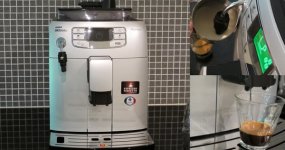 Review – Philips Saeco Intelia posted on January 10, 2012
Review – Philips Saeco Intelia posted on January 10, 2012 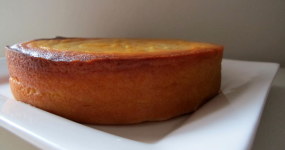 Kosher Whole Orange Cake posted on July 5, 2011
Kosher Whole Orange Cake posted on July 5, 2011 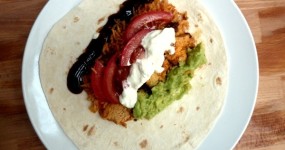 The quest for Mex part 2 – Feisty Chicken Burritos posted on December 21, 2010
The quest for Mex part 2 – Feisty Chicken Burritos posted on December 21, 2010  Cheat’s Dulce de Leche posted on January 7, 2011
Cheat’s Dulce de Leche posted on January 7, 2011  Café Review – Petty Cash Cafe, Marrickville posted on May 31, 2011
Café Review – Petty Cash Cafe, Marrickville posted on May 31, 2011  Salat Hatzilim posted on January 28, 2011
Salat Hatzilim posted on January 28, 2011 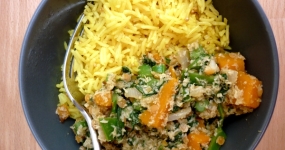 Sri Lankan Spinach with Coconut posted on December 10, 2010
Sri Lankan Spinach with Coconut posted on December 10, 2010
Disclaimer:
All opinions in this blog are mine, an everyday, real-life person. I do not accept payment for reviews and nor do I write sponsored posts. I do not endorse the content of the comments herein.

